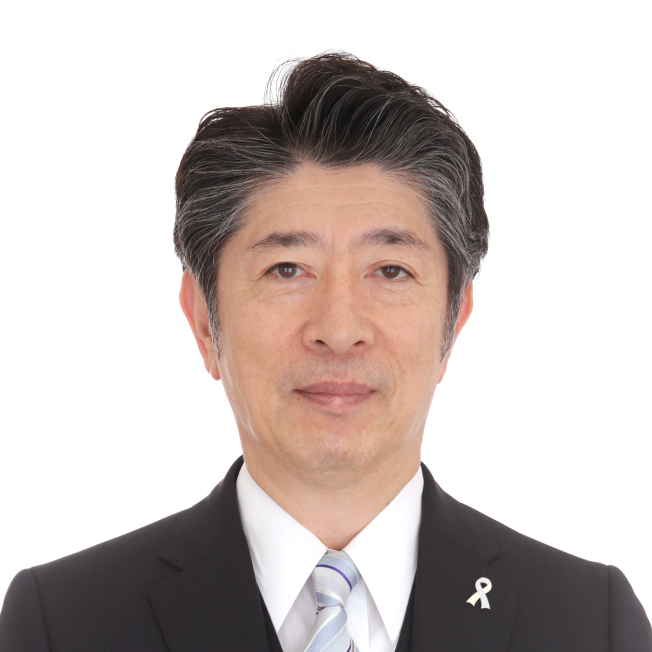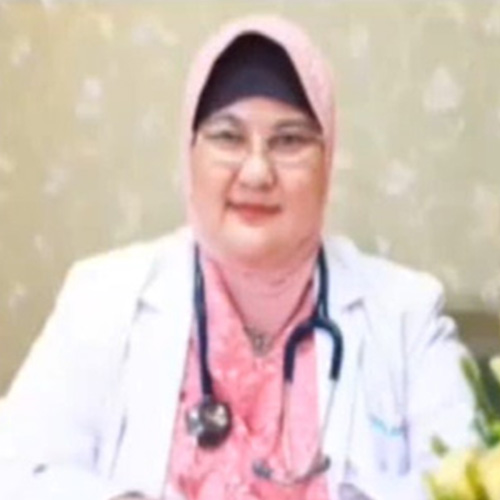
Education&ScienceWebinars
UPDATE ON COVID-19 SITUATION IN ASIA-PACIFIC REGION (1)
Wednesday 22 April 2020
- 20:00 UTC+9
Each expert on the panel presented for up to ten minutes, including responses to questions posted by the participants. The questions and responses can be seen at here.
Presenter's slides are available here and you can also see a video recording at www.youtube.com/watch?v=rii8b07ZPiM&feature=youtu.be.

Programme

Dr Yoichi Nakanishi
APSR President
Opening remarks

Dr Erlina Burhan
Indonesia COVID-19 Special Task Force Committeel
Pulmonology and Respiratory Medicine Department, Persahabatan Hospital

Dr Kuo-Chin Kao
Professor, Department of Thoracic Medicine, Chang Gung Memorial Hospital, Taoyuan, Taiwan

Dr Jiunn Liang Tan
Consultant Chest Physician, Respiratory Medicine Division, Department of Medicine, University of Malaya Medical Centre, Kuala Lumpur, Malaysia

Dr Khondekar Mustaq Adnan
Consultant, Respiratory Medicine & Head of COVID-19 Team, Central Police Hospital, Dhaka, Bangladesh

Dr Dinesh Dassanayake
Consultant Respiratory Physician, District General Hospital Polonnaruwa & COVID-19 Treatment Centre, Welikanda

Dr Arata Azuma
Chair of the APSR Education Committee
Questions for panelists and their responses
ⅰ. Currently, Malaysia is still under MCO (Movement Control Order), when do u think this MCO should end? How to end this MCO safely, so there will be no repercussion and reemerging of new clusters of Covid19?
ⅱ. How do you think Malaysia can bounce back in terms of economy, during and after Covid19 pandemic?
Dr Jiunn Liang Tan (Malaysia) responds:
ⅰ. When MCO shouldn’t end abruptly, it should be properly planned and taking account of various factor (festive seasons etc). The World Health Organisation (WHO) had outlined six conditions to be fulfilled by governments before lifting restrictions imposed to contain infections of Covid-19. Among them are ensuring that the disease transmission is under control, health systems are able to detect, test, isolate and treat every case and trace every contact; and that hot spot risks are minimised in vulnerable places, such as nursing homes. Meanwhile, schools, workplaces and other essential places should have established preventive measures, the risk of importing new cases “”can be managed”” and that the communities are fully educated, engaged and empowered to live under a new normal. The health ministry has outlined six criteria for the movement control order (MCO) — enforced to contain the Covid-19 pandemic since March 18 — to be lifted. The six are border control; movement control; the healthcare system, including a sufficient number of wards and labs; action to protect the high-risk groups; putting the “new normal” into practice; and implementing preventive measures in a community.
Even after lifting the restriction, we have to adapt to new norms i.e careful surveillance of all pneumonia as well as upper respiratory tract infection. Travelling need to be monitor closely. Starting an Apps like “Gerak Malaysia” could be a good initiative if being implemented carefully.
ⅱ. I am not an Economist. I don’t think I have an answer to this. Below is some suggestion from the expert: “ACCCIM president Tan Sri Datuk Ter Leong Yap said that post-MCO, the government needed to look into co-sharing the cost of health prevention through tax deductions on health costs, continued disinfection operations nationwide and setting clear and enforcement of standard operating procedures (SOPs). Although the recovery journey ahead remains challenging, Ter believes that businesses can regain their lost momentum with the support from the government should they persevere and remain focused.”
The link below could be a good read:
focusmalaysia.my/opinion/covid-19-post-mco-exit-strategy-and-reopening-the-economy
ⅰ. Do your institutions have ongoing trials for investigational drugs, e.g. hydroxychloroquine, lopinavir/ritonavir, convalescent plasma?
ⅱ. How is your experience on using noninvasive ventilation like high-flow nasal cannula for acute hypoxemic respiratory failure?
ⅲ. How is your experience with treating acute kidney injury? Which dialysis modalities (e.g. CRRT) are preferred?
Dr Jiunn Liang Tan (Malaysia) responds:
ⅰ. We are planning to run the IV Tocilizumab study among patient with severe COVUD pneumonia (Investigator initiated). We are also in collaboration with other hospital in possibly running the post exposure prophylaxis study among healthcare workers
ⅱ. Yes. It’s a good option. We have used it in almost all of our moderate-severe COVID pneumonia patient. Some of them avoided mechanical ventilation and some was able to wean down from mechanical ventilation to HFNC. HFNC is more user friendly and much comfortable for patient as well.
ⅲ. In the case of acute kidney injury in COVID patient, we have limited experience. Most of them do not need hemodialysis. One of our patient tried CRRT before. I think choice of dialysis will depend on case by case basis.
Dr Kuo-Chin Kao (Taiwan) responds:
ⅰ. No.
ⅱ. If you would like to use HFNC to treat acute hypoxemic respiratory failure in COVID-19 patients, the medical staff should have adequate PPE (personal protection equipment). In addition, the patients should be treated in the negative isolation room.
ⅲ. In the case of acute kidney injury in COVID patient, we have some experience. Some of the AKI patients may be needed renal replacement therapy. In general, the intermittent hemodialysis (IHD) is better than CRRT if we concern the safety of our medical staff especially in the ICU. I suggest IHD for stable hemodynamic patients, extended daily dialysis for mild unstable hemodynamic patients and CRRT for unstable hemodynamic patients.
Dr Dinesh Dassanayake (Sri Lanka) responds:
ⅰ. Currently no RCT in Sri Lanaka.
ⅰ. Experience of role of oxygen and non-invasive ventilation?
ⅱ. Infection rates in healthcare workers? Reasons? Lack of PPE or non-separation of covid vs non-covid patients?
Dr Jiunn Liang Tan (Malaysia) responds:
ⅰ. We would give supplementary oxygen to our patient with moderate – severe COVID pneumonia. We don’t use so much of NIV as we can put them on HFNC.
ⅱ. COVID infection among HCW that handling with known COVID patients is ZERO in Malaysia. Those HCW that are found to be infected with COVID-19 are acquired from communities or when there’s a breach in PPE during handling of SARI/liI/pneumonia patient. Lack of PPE definitely an issue but as long as there’s appropriate PPE being worn when handling COVID-19 patients, the infection rate should be ZERO.
A lot of SARI/liI/pneumonia patients were not truthful regarding their contacts / whereabout, hence, there’s a breach in PPE in these group of HCW when they are managing these patients. The solution to this is by having a dedicated Respi zone in ED and dedicated SARI/liI/pneumonia ward for screening of these group of patients before eventually being transfer care to the appropriate team of HCW.
Dr Kuo-Chin Kao (Taiwan) responds:
ⅰ. We treated severe COVID-19 pneumonia patients with oxygen therapy first and followed by HFNC if needed. NIV is not preferred.
ⅱ. As I know in Taiwan, there is no healthcare worker infected by COVID-19 when they cared the confirmed COVID-19 cases under adequate PPE.
Are there any features which can differentiate COVID from other respiratory diseases?
Dr Jiunn Liang Tan (Malaysia) responds:
COVID patient tend to present with dry cough, lethargy and shortness of breath. Anosmia also could be a common presentation in our cohort.
We also noticed the COVID pneumonia patient can deteriorate very quickly. Hence, we tend to monitor more closely when the patient is at day 6 – 8 of illness. Even a slight dropped of SPO2 from 99% to 96% could be an early clue to possible rapid deterioration.
The deterioration mainly due to cytokine storm – immunological response towards the viraemia.
Dr Kuo-Chin Kao (Taiwan) responds:
In addition to TOCC history, COVID-19 patients tend to suffered from shortness of breath, dry cough, and anosmia.
Current post covid follow up and monitoring of potential reinfection?
Dr Jiunn Liang Tan (Malaysia) responds:
We give our patient 3 months follow up plan to monitor their lung function and relevant blood test. We do not monitor for potential reinfection at the moment.
Dr Kuo-Chin Kao (Taiwan) responds:
We do not have monitor for potential reinfection post COVID-19 infection in our hospital.
Do you advise treatment with Hydroxy chloroquine to physicians(pulmonologist) attending pulmonology outpatients, in view of risk from unknown symptomatic patients of respiratory Outpatients. In India in some centres a Seven week (weekly) schedule of HCQ is followed in Covid isolation cetres , pending results. Rapid kits for Covid19 diagnosis are not yet available.
Dr Jiunn Liang Tan (Malaysia) responds:
No. There is not enough evidence to suggest treatment for asymptomatic COVID19 patient. The risk has outweighed the benefit of treating this group of patient. Hydroxychloroquine has not proven to be the effective treatment for COVID19 pneumonia. We advocate strict quarantine of these group of patient and closely monitor them esp when it is Day 6 – 8 of illness.
Dr Kuo-Chin Kao (Taiwan) responds:
I do not advise HCQ for asymptomatic patients for prevention in terms of the potential side effects.
Do you think the CT features of severe COVID-19 resemble that of rapidly progressive ILD. Addressed especially to Japanese colleagues who have a lot of experience in this area.
Dr Jiunn Liang Tan (Malaysia) responds:
CT scan in severe COVID19 patient could be very heterogenous. The common features tend to be the peripheral ground glass changes.
Dr Kuo-Chin Kao (Taiwan) responds:
I do not think the CT features of severe COVID-19 resemble that of rapidly progressive ILD. The CT features would be heterogenous such as GGO and consolidation.
have u tried CYTOKINE FILTERS (CYTOSORB). WE TRIED IN INDIA FOR A COVID PT WITH AKI requiring CRRT, with HIGH CRP levels ferritin, but in vain. What is your experience sir. can we try NIV, HFNC in awake SARI with hypoxia,resp alkalosis. Without intubat
Dr Jiunn Liang Tan (Malaysia) responds:
We have no experience in using CYTOSORB. There’s one patient that we planned to used but he sort of improved after Tocilizumab. Hence, we have not tried it. There’s report from UK that this therapy may works.
YES. You can use HFNC or NIV. I think somehow by using HFNC together with Tocilizumab/antiviral, we can avoid mechanical ventilation in some selected patients. The only problem with HFNC & NIV is both device is consider aerosol generating device, if we are using them, these patient need to be in negative pressure room.
Dr Kuo-Chin Kao (Taiwan) responds:
We do not have the experience of CYTOKINE FILTERS
How to treat covid 19
Dr Jiunn Liang Tan (Malaysia) responds:
Depend on the severity. We advocate treatment for patient with moderate – severe pneumonia with exception of elderly patient or those with comorbidities.
Dr Kuo-Chin Kao (Taiwan) responds:
Regarding the COVID-19 caused by SARS-CoV-2, no therapies have been shown effective to date.
1. JAMA. 2020 Apr 13. doi: 10.1001/jama.2020.6019. [Epub ahead of print
How would we interpret the covid test report
Dr Jiunn Liang Tan (Malaysia) responds:
Depend on the test kit that are used. Different test kit detecting different part of the virus. Need to look at the manual for the test kit.
Dr Kuo-Chin Kao (Taiwan) responds:
In Taiwan, the RT-PCR test is the golden standard diagnosis of COVID-19. Rapid test or antibody test were not available in practice at this moment.
I will ask you how the Covid19 infection affects the treatment of chemotherapy, molecular target therpy and immuno check point inhibitor? From china, the authors have reported the high risk for the patients with past history of malugnancy. Actually, I have experienced the abnormal shadows similar to the one of Covid 19 infection at the follow up CT with lung cancer patients who took chemotherapy, molecular target therapy and ICI. However they have no symptoms. they may be from other reason, however I am afraid of rapid deteriration, and spread of infection.
Dr Jiunn Liang Tan (Malaysia) responds:
Malignancy is definitely one of the risk factor for developing any lung infection especially among those on chemotherapy. When the immune system are most vulnerable.
For those on molecular targeted therapy/ immune check point inhibitor, the risk of COVID19 infection is the same as any patient with chronic lung disease.
The most important things are the history of contact with COVID patients or recent travelling to overseas. CT scan for COVID can mimic a lot of condition. Hence, it’s not specific. If there’s a suspicion, we would perform the RT-PCR testing for COVID.
Dr Kuo-Chin Kao (Taiwan) responds:
I do not have the experience on this issue and without any comment.
If IGm and IGg both are positive patient should be treated
Dr Jiunn Liang Tan (Malaysia) responds:
No. Patient should be isolated/quarantine.
Dr Kuo-Chin Kao (Taiwan) responds:
No. Treat or not depends on the weather the symptom is related virus infection.
In a chest clinic there can be a patient of COVIC19 with a mask may be encountered before his diagnosis. Can a routine surgical mask protect the chest physician?
Dr Jiunn Liang Tan (Malaysia) responds:
Surgical mask alone is not enough to protect the chest physician.
We suggest social distancing at consultation room. If there’s close handling of patient, the HCW should wear face-shield together with the surgical mask and apron as well as surgical glove. Proper hand hygiene should be practise.
If there’s aerosol generating procedure i.e Nebuliser, performing PEFR, HCW should wear all the above plus head cover, shoe cover and N95 mask.
Dr Kuo-Chin Kao (Taiwan) responds:
In chest clinic, we suggest the PPE would be N-95 mask, face-shield, head cover, contagion gown and surgical glove.
IS There comments on the use of Omeprazole?
Dr Jiunn Liang Tan (Malaysia) responds:
No issue with the use of omeprazole among our COVID patients.
Dr Kuo-Chin Kao (Taiwan) responds:
I have no comment on the use of PPI in COVID-19 patients.
It is better if you choose doctors with experience in managing Covid 19
Dr Jiunn Liang Tan (Malaysia) responds:
All of us are still learning to treat this new disease.
Dr Kuo-Chin Kao (Taiwan) responds:
I think so. However, all of us are still learning to manage and treat this novel disease.
Management of severe covid pneumonia
Dr Jiunn Liang Tan (Malaysia) responds:
No proven therapy at the moment. ICU care mainly.
We use IV Tocilizumab if there’s evidence of cytokine storm. Our personal experience with Tocilizumab is quite promising.
We have tried Kaletra & Interferon, but the outcome are not encouraging.
Dr Kuo-Chin Kao (Taiwan) responds:
For the severe pneumonia caused by the COVID-19, the major treatment is to correct hypoxemia by oxygen therapy. The most two important points are to closed monitoring the response of oxygen therapy and to set a threshold to determine the timing of intubation if the condition deteriorated. In order to prevent the complications related to intubation in these isolated patients, early and a planned intubation are necessary.
Many of Asthma & COPD patients come to our private chamber with cough,fever,sneezing and difficulty in respiratory respiration. How can we confirm COVID-19 positive or negative without test? How can we maintain social distancing in our private chamber? Covid test is not available. Seek your suggestions by Bangladesh perspective to continue private chamber.
(No reponse yet)
What predispose a virus to jump species
Does sars-COv2 affect the red cells
What is the relationship between the NSAID and sars-COv2
Are the ACEi and ARB drugs sars-cov2 penetration facilitators
Dr Jiunn Liang Tan (Malaysia) responds:
We think that human is one of the reservoir for SARS-CoV2. Possible. Need more study on this.
From WHO: At present there is no evidence of severe adverse events, acute health care utilization, long-term survival, or quality of life in patients with COVID-19, as a result of the use of NSAIDs. www.who.int/news-room/commentaries/detail/the-use-of-non-steroidal-anti-inflammatory-drugs-(nsaids)-in-patients-with-covid-19
Need more study to determine this.
Dr Kuo-Chin Kao (Taiwan) responds:
- The characteristic of RNA virus and spread through the global world could be explained the virus to jump species.
- We need the more clinical information and data to confirm the relation between ACEi /ARB drugs and COVID-19.
Thanks for the wonderful webinar focusing on the most crucial theme everyone is interested in. Do you think anyone who can forecast certain time when the coronavirus issue would end among the panelists?
Dr Jiunn Liang Tan (Malaysia) responds:
Looking at the situation, some said may be last until end of the year or 2021.
Dr Kuo-Chin Kao (Taiwan) responds:
I cannot forecast the time about the coronavirus issue ending. It might be different in the different countries or areas.
what are the guidelines for using a stethoscope on a COVID positive patients
Dr Jiunn Liang Tan (Malaysia) responds:
All medical devices used on COVID patient need to be cleaned with alcohol based cleanser.
Dr Kuo-Chin Kao (Taiwan) responds:
All medical devices including stethoscope used on COVID patients need to be cleaned with alcohol based cleanser. At a special situation, we do not suggest using stethoscope to check the position of endotracheal tube when patient was intubated. We suggest using disposable etCO2 measure to confirm the ET tube which was located in the trachea not in esophagus.
What is the place of steroides and plasma in COVID?
Dr Jiunn Liang Tan (Malaysia) responds:
We think that used of low dose methylprednisolone mainly at the peak viremic phase to prevent cytokine storm. Use of steroid in ARDS have limited evidence. We do not use steroid in ARDS.
We do not have experience using convalescent plasma.
Dr Kuo-Chin Kao (Taiwan) responds:
We do not suggest routinely use steroid for COVID-19 patients. We do not have experience of convalescent plasma in the treatment of COVID-19 patients.
Dr Dinesh Dassanayake (Sri Lanka) responds:
Steroids: There are no RCTin COVID .Previos studies on Viral pneumonias ithout ARDS has shown increased mortality and harmful effects.However recent case series and retrospective cohort analysis has shown reduced martality.Therefore some guidelines recomend using steroids for COVID with ARDS, and also for other compelling indications like asthma and COPD exacerbation.Steroids not recommended routinely. Convalacent plasma :No RCT but previos studies on viral pneumonia has shown reduced mortality.Case series in China has shown reduced viralload and increased neutralizing antibody levels.Therefore its not recommended routinely but compassionate use is permitted for severe ife threatning COVD.
What is the practicality of antigen rapid test kits as compared to RT PCR in diagnosing COVID-19?
Dr Jiunn Liang Tan (Malaysia) responds:
Rapid mass screening for detection of COVID19.
Dr Kuo-Chin Kao (Taiwan) responds:
The antigen rapid test kit could be used for rapid mass screening for detection of COVID19. However, the false negative result issue should be addressed carefully.
What is the real pathophysiology in the COVID 19 disease process?
Dr Jiunn Liang Tan (Malaysia) responds:
erj.ersjournals.com/content/early/2020/03/17/13993003.00607-2020
journals.physiology.org/ajplung/The-Pathophysiology-of-CoV-2-COVID-19-and-SARS-Infection
Dr Kuo-Chin Kao (Taiwan) responds:
These two references well addressed the possible pathophysiology of COVID-19 pneumonia.
1. Gattinoni L. et al. COVID-19 pneumonia: different respiratory treatment for different phenotypes? (2020) Intensive Care Medicine; DOI: 10.1007/s00134-020-06033-2
2. Gattinoni et al. Critical Care (2020) 24:154
When & how to use NIV in Hypoxaemic Respiratory failure in COVID-19 Patient?
Dr Jiunn Liang Tan (Malaysia) responds:
Similar to any patient with hypoxemic respiratory failure.
Dr Kuo-Chin Kao (Taiwan) responds:
We do not suggest using NIV in hypoxemic respiratory failure in COVID-19 patients. Early intubation is preferred.
Dr Dinesh Dassanayake (Sri Lanka) responds:
NIV is an aerosol generating procedure and previos experience has shown increased viral transmission to health care workers.Studies in China has shown very high failure rate.Therefore most guidelines discourage use of NIV.Except when other resources are exhousted and HFNC are not available.If NIV is used it should be done with strict airbourn precautions and a dual limb circuit should be used with HEPA and viral filters.
Which is one is more beneficial: HFNC or early intubation? And what is the parameter and timing for early intubation?
Dr Jiunn Liang Tan (Malaysia) responds:
We prefer HFNC over early intubation. Those on HFNC in our cohort seems to be doing better than those intubated patient.
Dr Kuo-Chin Kao (Taiwan) responds:
In practically, HFNC might be better than early intubation. However, you should closed monitor the patient to avoid emergent intubation. Regarding the parameter or timing of early intubation, no response or mild deterioration to present treatment should be considered.
why laboratory results from covid patients show hypoalbumin, hypocalcemia, elevated D-dimer. When we use anticoagulant in covid-19 patient?
Dr Jiunn Liang Tan (Malaysia) responds:
Elevated D-dimer is link with severe COVID pneumonia and it’s a prognostic indicator for mortality.
We used prophylactic anticoagulant in patient with risk factors to develop VTE.
Dr Kuo-Chin Kao (Taiwan) responds:
The hypoalbuminemia, hypocalcemia and elevated D-dimer are common complications in the critical ill patients. We do not suggest routinely use anticoagulant in COVID-19 critical ill patients.
Will COVID 19 progress to chronic interstitial pneumonitis?
Dr Jiunn Liang Tan (Malaysia) responds:
We are yet to know about this. Need to follow up with these patients to determine the progression.
Dr Kuo-Chin Kao (Taiwan) responds:
We are yet to observe about this phenomenon. Some patients may have post infection pulmonary fibrosis and it is possible to completely recovery later. We need more time to follow up these post COVID-19 infection patients.
Among the Covid-19 patients, do you have many patients with chronic respiratory disease such as asthma, COPD, ILD?
Dr Jiunn Liang Tan (Malaysia) responds:
We have some patient with chronic respiratory disease but the numbers are small.
Dr Kuo-Chin Kao (Taiwan) responds:
Among our COVID-19 patients, most of patients were young age and very few patients with chronic respiratory disease.
What is the mortality rate of patients in Mechanical Ventilation? Any common characteristic in the survivals?
Dr Jiunn Liang Tan (Malaysia) responds:
From our own centre experience, so far only one mortality among those 10 patients admitted. Those who survived are those who have received IV Tocilizumab at the appropriate timing. The one that died actually received IV Tocilizumab as well but was given too late.
Dr Kuo-Chin Kao (Taiwan) responds:
From the limited date from Taiwan CDC, the estimated mortality rate is about 25% inCOVID-19 patients with mechanical ventilation. According to the published articles from China, Italy, UK and USA, the mortality rates are very varied. One important factor related to mortality or survival is the capacity of critical care service.
What’s your opinion about prophylactic HCQ for Doctors who are treating patients?
Dr Jiunn Liang Tan (Malaysia) responds:
We are planning a study on this. At the moment, not enough evidence to make any recommendation.
Dr Kuo-Chin Kao (Taiwan) responds:
I do not suggest the prophylactic HCQ for anyone due to the potential side effects.
Dear Dr. Burhan, how long you were giving chloroquine and azithromycine? at what doses?
(No reponse yet)
what is the place for chloroquine prophylaxis for high risk people?
Dr Jiunn Liang Tan (Malaysia) responds:
We do not use chloroquine. We used hydroxychloroquine to treat high risk patients that presented with mild symptoms. We do not prophylactically give HCQ to all patient.
Dr Kuo-Chin Kao (Taiwan) responds:
I do not suggest the prophylactic HCQ or chloroquine for anyone due to the potential side effects.
What is the place for Azithromycin in Covid
Dr Jiunn Liang Tan (Malaysia) responds:
We do not use azithromycin in our centre.
Dr Kuo-Chin Kao (Taiwan) responds:
We do not use azithromycin only for COVID-19.
Dear dr. Kuo, how do you manage the severe or ARDS case due to COVID 19 since the death rate was significantly low? can you give us in details? Thank you
Dr Kuo-Chin Kao (Taiwan) responds:
ⅰ.For the severe pneumonia caused by the COVID-19, the major treatment is to correct hypoxemia by oxygen therapy. The most two important points are to closed monitoring the response of oxygen therapy and to set a threshold to determine the timing of intubation if the condition deteriorated. In order to prevent the complications related to intubation in these isolated patients, early and a planned intubation are necessary.
ⅱ.For the ARDS caused by the COVID-19, it is important to differentiate the patients between L phenotype or H phenotype. You can differentiate the patients by many methods, such as chest CT, high or low compliance, response to PEEP or not, low or high recruitability and so on.
(1) For the L phenotype ARDS, the compliance is not so low and even relatively normal. In terms of managements in these not typical ARDS patients, we can apply a little higher tidal volume (7-9 ml/PBW), lower PEEP (8-10 cmH2O) and RR below or equal 20/min.
(2) For the H phenotype ARDS, the compliance is relative low with high shunting and probably recruitable. In terms of managements in these typical severe ARDS patients, we should apply lung protective strategy with small tidal volume (4-6 ml/PBW), higher PEEP (by low FiO2-PEEP table) and keeping airway plateau pressure (PPlatea) lower than 30 cmH2O. The sedation, neuromuscular blockade and pain control were still important in order to well applying adequate mechanical ventilator settings.
(3) If these severe ARDS patients were not response or deteriorated to managements or treatments, adjunctive treatments should be considered early such as recruitment maneuver (prefer 40-40 cm H2O method), inhaled NO and prone position. Rescue therapy such as ECMO (VV and /or VA) might be considered if necessary. Regarding the ECMO, I suggest following the inclusion criteria of EOLIA study to decide the ECMO treatment or not.
References:
- Gattinoni L. et al. COVID-19 pneumonia: different respiratory treatment for different phenotypes? (2020) Intensive Care Medicine; DOI: 10.1007/s00134-020-06033-2
- Gattinoni et al. Critical Care (2020) 24:154
- https://www.sccm.org/SurvivingSepsisCampaign/Home
N Engl J Med. 2018 May 24;378(21):1965-1975.
In Taiwan, are most confirmed cases treated in negative pressure single rooms in hospitals (rather than home)?
Dr Kuo-Chin Kao (Taiwan) responds:
In Taiwan, all of the confirmed cases were isolated or treated in the standard negative pressure isolation rooms in hospitals rather than home. Until to April 23rd, totally 427 confirmed cased was reported and 253 cases were released from quarantine in Taiwan.
Which situation you used methylprednisolone?
Dr Jiunn Liang Tan (Malaysia) responds:
We think that used of low dose methylprednisolone mainly at the peak viremic phase to prevent cytokine storm. Use of steroid in ARDS have limited evidence. We do not use steroid in ARDS.
Dr Kuo-Chin Kao (Taiwan) responds:
In general, we do not use steroid in COVID-19 patients except some underlying conditions need steroid such as asthma or COPD with AE.
Dr Dinesh Dassanayake (Sri Lanka) responds:
see section on steroids
What about use of convalescent plasma?
Dr Jiunn Liang Tan (Malaysia) responds:
We have no experience in using convalescent plasma.
Dr Kuo-Chin Kao (Taiwan) responds:
We have no experience in using convalescent plasma to treat COVID-19 patients.
Dr Dinesh Dassanayake (Sri Lanka) responds:
see section on caonvalacent plasma
What is the sensitivity of PCR test in deed bodies?
Dr Jiunn Liang Tan (Malaysia) responds:
Yes. They are quite sensitive. SARS-CoV2 can survive quite long on various surfaces.
Dr Kuo-Chin Kao (Taiwan) responds:
I have no idea about this question. Regarding the sensitivity of PCR test of COVID-19, many factors will affect the sensitivity such as site of specimen, technique of sampling, transportation of specimen, and timing from sampling to examination.
How can we explain Covid19 in younger age groups in our region- Asia pacific?
Dr Kuo-Chin Kao (Taiwan) responds:
In Taiwan, many COVID-19 patients were imported from USA, Europe and other countries. Most of these patients were students studied in USA and European countries.
Are the countries ready for a second wave?
Dr Jiunn Liang Tan (Malaysia) responds:
Yes
Dr Kuo-Chin Kao (Taiwan) responds:
Yes.
Anyone has any experience in ventilating 2 patients with one ventilator? Any guiding principles?
Dr Jiunn Liang Tan (Malaysia) responds:
We have no experience in this aspect. Anyway, guidelines do not recommend the use of one ventilator for multiple patients as every patient’s condition is different and the stage of disease also varies.
Dr Kuo-Chin Kao (Taiwan) responds:
We do not have the experience in ventilating 2 patients in one ventilator. We strongly suggest to avoid doing this.
How frequent does PCR negative x2 happens in Covid19 patients? What is the role of serology then?
Dr Jiunn Liang Tan (Malaysia) responds:
RT-PCR testing is quite sensitive. It’s the method of acquiring the sample. If the nasal swab or oropharyngeal swab was performed incorrectly, RT-PCR testing would be negative.
The role of serology is yet to be determine as some recovered COVID patient still can be re-infected. Positive serology seems like not equivalent to acquired immunity.
Dr Kuo-Chin Kao (Taiwan) responds:
We do not have the exact data regarding the frequency of PCR negative conversion in the recovery stage of COVID-19 patients. However, some confirm COVID-19 patients will take a long time (up to 2 months) to obtain continuous 3 times (apart from 24 hours) negative PCR results from nasopharynx.



